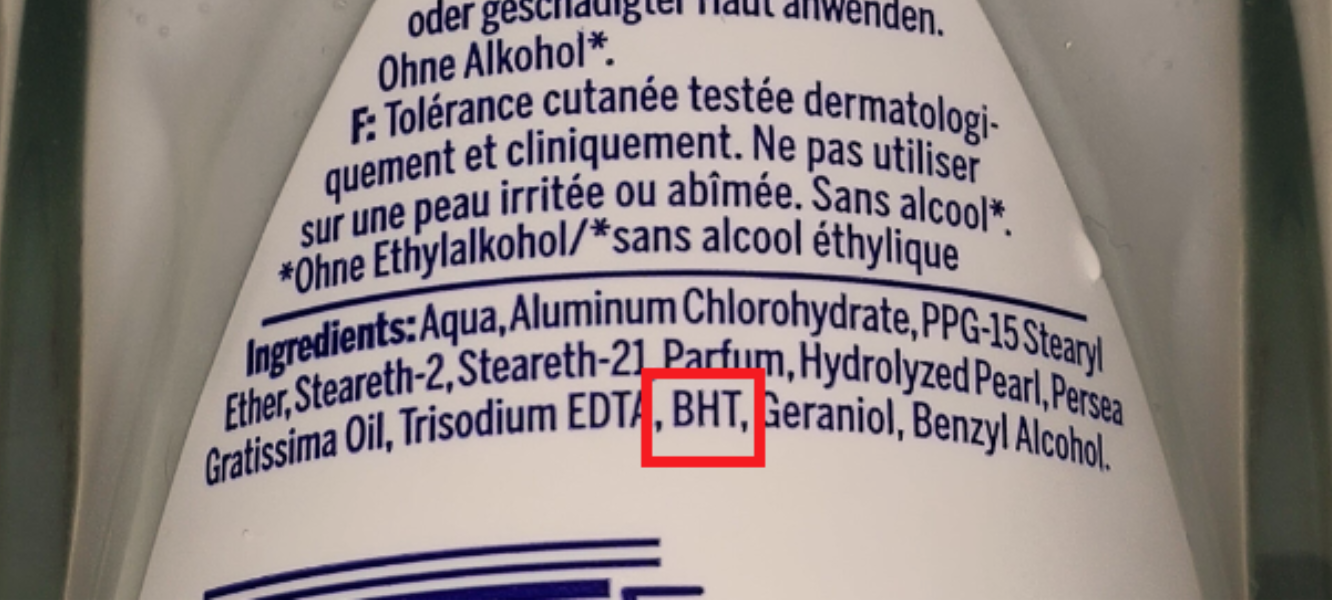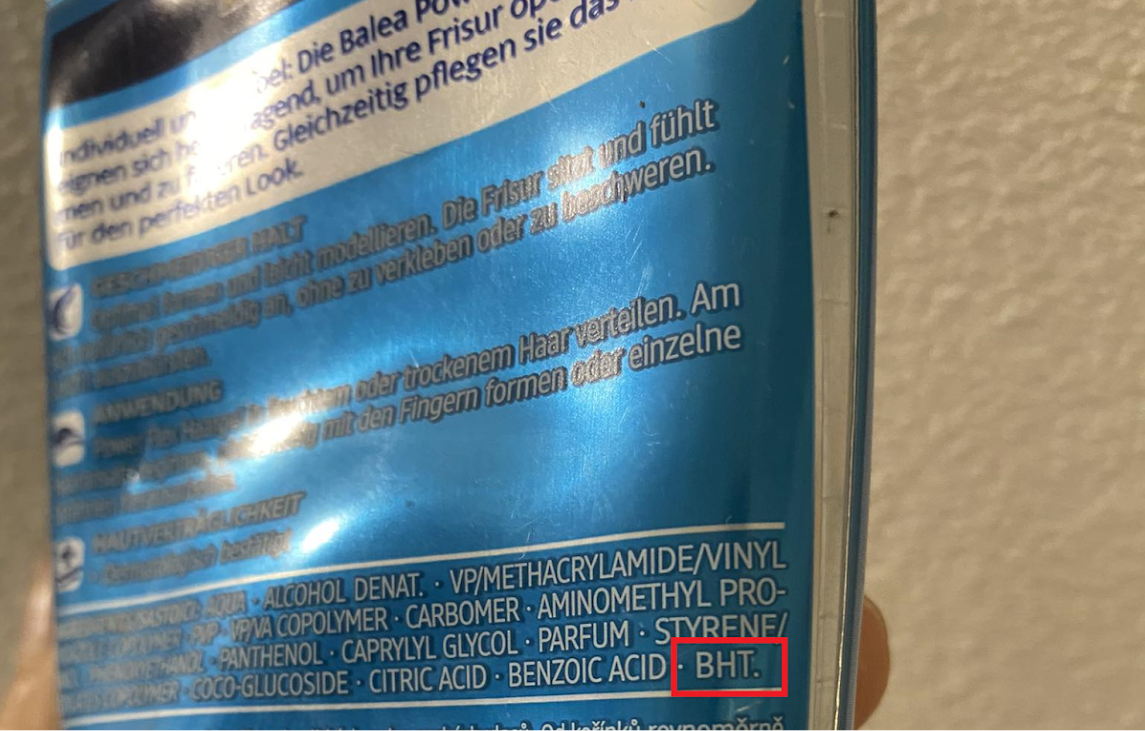BHA and BHT are functioning as synthetic antioxidants, commonly used in beauty and personal care products, petroleum products and various medications. They are used to reduce damage such as changing odor, color and texture and maintain the right properties of products when exposed to air [1].


Both BHA and BHT are also often used as food additives. You can recognise them under E321 (BHT) and E320 (BHA). These substances add a distinct flavour to food products, act as stabilisers, antioxidants and preserve the food from spoilage.
No matter if added to food or our cosmetic products, both these substances raise concern. BHA is even labeled with “Danger!” on the ECHA (European Chemical Agency) website due to its toxicity to aquatic life and the suspicion of causing cancer and damaging fertility or the unborn child [2].
BHT is also very toxic to aquatic life and is under assessment as endocrine disrupting [3]. This means that there is a suspicion that BHT is acting as a human hormone and hence tricking our body into a hormonal reaction which can lead to problems with fertility.
BHT was not regulated under the Regulation (EC) No 1223/2009 [4], however, due to the raised concerns related to potential endocrine disrupting properties of BHT, the EU Scientific Committee on Consumer Safety published an opinion stating that BHT is considered safe in certain concentrations.
Following this opinion, in early 2022, the European Commission submitted a notice to establish restrictions for using BHT as an antioxidant in cosmetic products [5].
According to the new restrictions, BHT will be allowed only in concentrations ranging from 0,001% in mouthwash to 0,8% in leave-on and rinse-off products [6]. Since 1 July 2023 cosmetic products that do not comply with this restriction about BHT are not allowed to be placed on the market within the EU [7].
Fact Sheet BHA, BHT:
What is it
- Butylated hydroxyanisole BHA
- Butylated hydroxytoluene BHT
- A lipophilic, meaning able to dissolve in oil, organic compound
Where can we find it
- Used as a synthetic antioxidant in food additives, cosmetics and personal care products and pharmaceuticals.
Health effect
- Risky when ingested
- Moderately carcinogenic and toxic to organ system
- Irritant to skin, eyes, or lungs
- Endocrine disruptor
Effect environment
- Has a high toxicity to aquatic organisms
- As of now, there are only assumptions:
- Not readily biodegradable
- Moderate to high bioaccumulation potential
GS tip: According to the updated 1223 Regulation, BHT will be soon restricted, in the meantime however, try to limit your use of products with BHT as much as you can and your skin will thank you. 🙂
Sources
[1] https://health.ec.europa.eu/system/files/2022-08/sccs_o_257.pdf
[2] https://echa.europa.eu/sk/substance-information/-/substanceinfo/100.042.315
[3] https://echa.europa.eu/sk/substance-information/-/substanceinfo/100.004.439
[4] https://eur-lex.europa.eu/legal-content/EN/TXT/?uri=CELEX%3A02009R1223-20220731
[5] https://www.cti-cert.com/en/new/6975.html
[6] https://images.chemycal.com/Media/Files/22_2778_01_e.pdf
[7] https://ec.europa.eu/growth/tools-databases/cosing/details/100318
Fact sheet sources
https://echa.europa.eu/documents/10162/562a6691-9917-f654-be5a-0bf3b0ba5e44


0 Comments